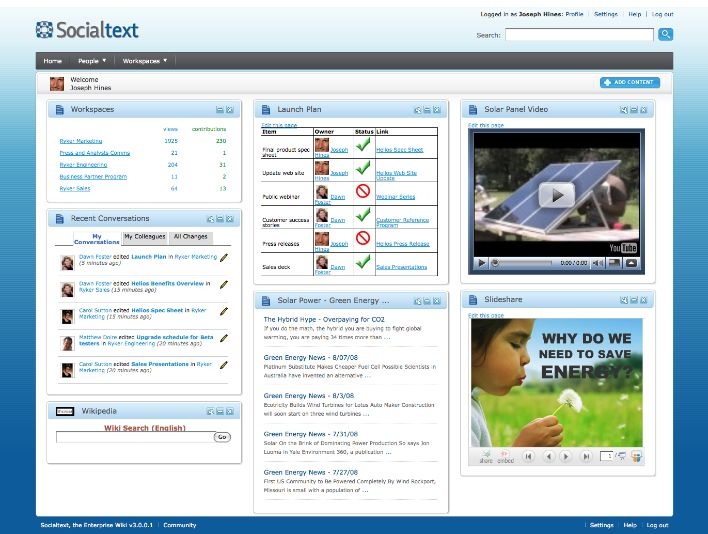
I am pleased to announce that I am joining the ReadWriteWeb team effective today. I’ve been in conversations with Bernard Lunn about how opportune a time it is for ReadWriteWeb to seriously layer on enterprise coverage to the already phenomenal job ReadWriteWeb does in covering various web 2.0 startups and the industry. We concluded those conversations shortly after SXSW, and I’ve decided to accept their gracious offer to join the team. ReadWriteWeb’s Enterprise channel will focus exclusively on how the evolving Internet and its ecosystem of related products coupled with the 2.0 philosophies of openness, collaboration, transparency, and sharing are disrupting markets and revamping business processes all over the globe. We’ll cover large enterprises, medium and small businesses, vendors, and all sorts of consultants and ecosystem participants. If you’re conducting commerce and relying on Internet technology to make a buck, we’ll be watching.
Of course, because of my background, I’ll be focusing especially on Enterprise 2.0 developments which will include most of what you’ve come to find here on the ITSinsider blog. But through my affiliation with the Enterprise Irregulars and many of the consultants and gurus I’ve met on the social web who specialize in different aspects of Enterprise expertise, I’ll be broadening my reach beyond simply wikis, blogs, RSS, and mashups. I will be depending on my “friends” to help shape the relevance and meaning of new developments in the Enterprise space by going back to my roots as a journalist and seeking expert sources for commentary.
Additionally, because of the flexibility we have as a management team to experiment with business models and new channels for income generation, we will be rolling out a host of products and services that will add tremendous value to our readers and sponsors. Stay tuned for announcements there.
In the meantime, look for Richard‘s announcement later today. If you wish me well (and I hope you do!), please get me off to a good start by leaving a comment on the ReadWriteWeb site. Thanks for reading ITSinsider. I look forward to many years ahead of quality reporting and “community” service.
4/14 UPDATE: Screeeech. Stay Tuned.


 I read an old-fashioned user-generated
I read an old-fashioned user-generated  lthough, admittedly, it’s scary facing the prospect of not having a salary during oh, say, the worst economic crisis ever in my adult life time, I remain optimistic. Let’s just say I’m taking a huge leap of faith that dictates when I jump off this ledge, there will be a large, strong net– the social web– ready to catch me. I’ve been inspired by so many in the 2.0 community to trust, to share, to work together to achieve common goals. Now I’m putting my own rhetoric to the test.
lthough, admittedly, it’s scary facing the prospect of not having a salary during oh, say, the worst economic crisis ever in my adult life time, I remain optimistic. Let’s just say I’m taking a huge leap of faith that dictates when I jump off this ledge, there will be a large, strong net– the social web– ready to catch me. I’ve been inspired by so many in the 2.0 community to trust, to share, to work together to achieve common goals. Now I’m putting my own rhetoric to the test. 


